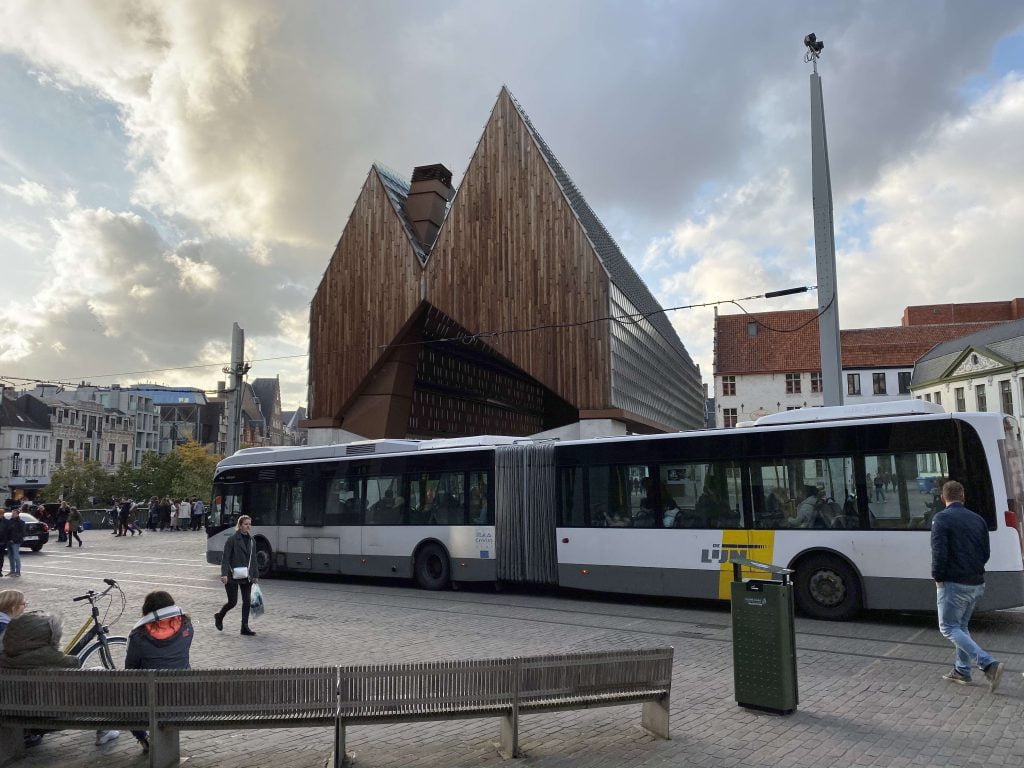Public transport in Flanders will be completely redesigned from 2022. Local authorities may then help determine where buses and trams run in different transport regions. At the same time, Flanders is switching from basic mobility, where everyone had to have a stop 750 meters from their door, to so-called basic accessibility. Transport on demand or in other words a demand-driven transport system is the future. Yet there is also criticism on the system. With the reform of public transport, there are fears that a number of areas in Flanders will be without a smooth bus connection.
The Department of Mobility and Public Works developed a step-by-step plan for the construction of a Hoppin point. The step-by-step plan is intended for all actors involved in the construction of a Hoppinpunt and explains what a Hoppinpunt is, what it must meet and how the Hoppin house style must be applied. We do not only travel with one means of transport, but are increasingly combining different forms of mobility.
For example, we ride the bike to the station and then take the train. Or we drive by car to a park and ride and take the tram or shared bike to the city center. This facilitates smooth switching. The availability of coordinated transport options and well-equipped hubs allow for smooth switching between different modes of transport.
After years of preparation, each transport region must draw up its own plan. The core of the plan remains the broad lines between and around the cities with additional lines and the use of flexible buses, taxis and subsystems to close the regional gaps in rural areas. Everything will be arranged by one central control center that also has regional monitoring of the implementing transport companies in the transport region. The implementation of the transport itself is carried out by various companies that are replacing the current winding bus lines that now pass each other empty everywhere for the central control center.
The rides will soon be ordered via the Mobility Center. A kind of control center for the whole of Flanders, but with attention for the different regions. Examples are known abroad where this system has been in use for some time and now even fully connects with Mobility as a Service providers for bringing together all forms of mobility such as shared cars, shared scooters and rental bicycles.
Public transport company De Lijn dropped out last week because the assignment is too complex for her. There is therefore a good chance that the specialism for implementation will lie with a private company. The contract will be awarded in March, after which the winner of this tender will quickly switch to having everything operational before January 1, 2022. In itself not an impossible task. Flanders finally dares to make choices. Many buses now run around uselessly and cost a lot of money, and that will end soon.
Pieter Vansteenwegen is associate professor of Optimization of public transport and logistics and chairman of the KU Leuven Mobility Research Center. He responds to the article in the newspaper De Morgen about the reform of public transport in Flanders with a letter. A nuanced article with supporters and opponents, but it seems to focus mainly on the disadvantages of the reform. According to Vandersteenwegen, two important things are lost in the article. First, the biggest benefit of this reform lies in the long term. The second thing that, according to the senior lecturer, is insufficiently discussed is that every major reform of public transport is accompanied by winners and losers. And unfortunately the losers are typically more visible.
Also read: Mobility center: matching supply and demand


